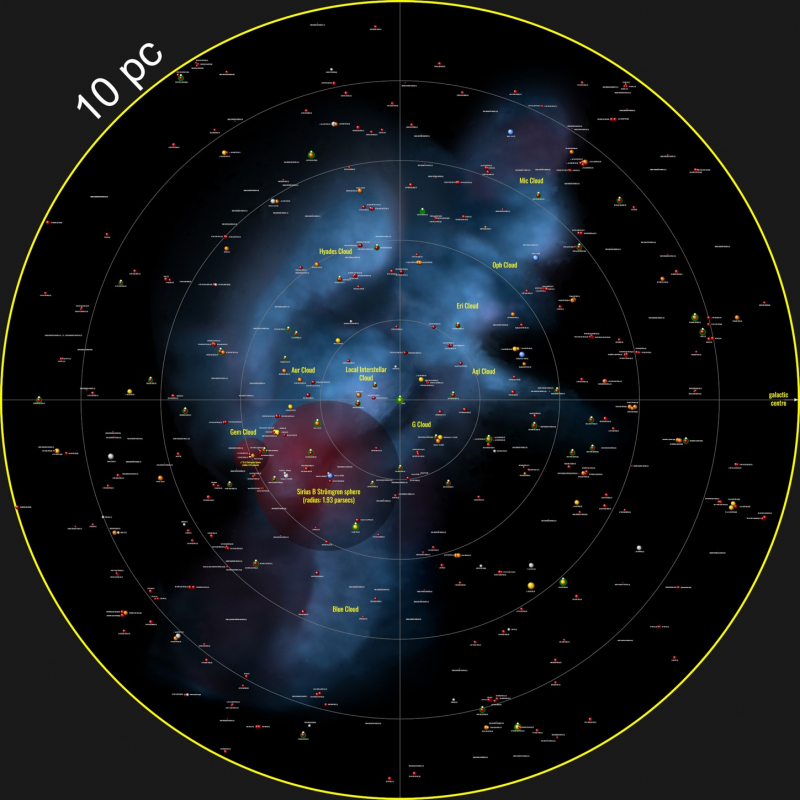The neighborhood of the Sun
Close enough to be observed with precision, the stars near our Sun constitute a unique laboratory for our understanding of stellar physics and the galaxy.
A research team of the UTINAM institute and the IRAP made a census of the stars located at less than 10 parsec from our Sun. This inventory work is based on data from the literature as well as on high precision photometric and astrometric information provided by the third version of the Gaia catalog, recently published. It shows the great richness of the solar neighborhood, where various types of stars of different ages, sizes, masses and temperatures are found. Most of these stars are red dwarfs, the most common type of star in the Milky Way, but there are also a surprising number of brown dwarfs and exoplanets, as well as a high frequency of multiple systems. The researchers have taken care to identify many parameters concerning these stars, and have compiled a list of references to facilitate future studies.

This catalog reflects as much as possible the current state of our knowledge of the solar neighborhood. It provides reference stars that can be used to define calibration samples for future detailed observations with current and future state-of-the-art instruments. It also has great potential for use by amateur astronomers and the general public. The study also explores how this list will evolve in future years in the context of large space and ground-based telescopes. Between reality and science fiction, nearby planetary systems are the easiest to scan for biomarkers and may one day be the first targets of human space travel.
Further Resources
- Scientific article : The 10 parsec sample in the Gaia era – Astronomy & Astrophysics (2021) by C. Reylé, K. Jardine, P. Fouqué, J. A. Caballero, R. L. Smart et A. Sozzetti, https://doi.org/10.1051/0004-6361/202140985
- A higher resolution map is available by following this link : https://gruze.org/galaxymap/10pc/
IRAP Contact
- Pascal Fouqué, Pascal.Fouque@irap.omp.eu






